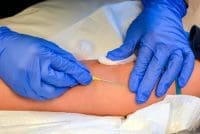Women ignore having their health checked around
menopause at their own peril. Over the next several weeks, I will prove my
point. Prevention is always better than cure, and early diagnosis of disease
and subsequent treatment is always better than late.
Here is the best single piece of advice I can give
you when counseling women. Whenever considering treatment for any symptom or
disease, consider the possibilities in an order from least invasive or
potentially harmful to most invasive. While this is so obviously sensible and
logical, in the majority of instances a visit to the doctor results in a
prescription for a medication. Indeed, that is what most people expect.
The correct approach to address any symptom or
disease is to use the following order of attack, the Safety First Rule:
1. Try healthy living or the
nonmedication route. You know what I mean – healthy diet, exercise, no smoking,
no drugs, and the rest.
2. Look for nonprescription complementary and alternate
medications such as herbal products and nutrients, but only if they have been proven to be safe, effective, standardized
and pure, and uncontaminated by potentially harmful ingredients. (I will
address this important subject some time in the future).
3. Proven-effective prescription
medications, taken according to the most
current scientific recommendations. The same rule applies here – start with
the drug and dose carrying the least potential harm and only change if it does
not work.
4. In certain highly specific
circumstances, surgical procedures may be indicated.
The next best piece of advice I can give you is to
encourage your patients to try not to sweat the small stuff. For example, if
there is bone loss and need for a pharmacologic agent, explain what options
might indicate what drug is best for that woman, so she can work with her
clinicians in making her choice. Another example may be the interpretation of a
blood test for heart attack risk. Patients (in fact a lot of clinicians too!)
cannot be an expert on good cholesterol and bad cholesterol and all the rest of
the minutiae. What they need to know is whether the test says they are at risk
or not.
Following the Safety First
Rule I have set above, I will present you over the next few weeks with the most
current approach to treatment of the potential problems related to menopause that I listed and explained in detail in previous blogs. So,
starting with the least invasive (least potential risk factors), and building
up to the most invasive, I will address the most appropriate approach to each
of these problems.
Starting this approach, my
next blog will consider the most frequent symptom of menopause by detailing the
current best way to cool the hot flashes.
Meanwhile, Happy New Year, and
may 2013 be blessed with good health, happiness, and the joy of fulfillment.
Wulf Utian MD PhD DSc
Author; CHANGE YOUR
MENOPAUSE – Why one size does not fit
all. http://www.amazon.com/Change-Your-Menopause-size-does/dp/0982845723/
Click here for a limited offer for a free newsletter


















